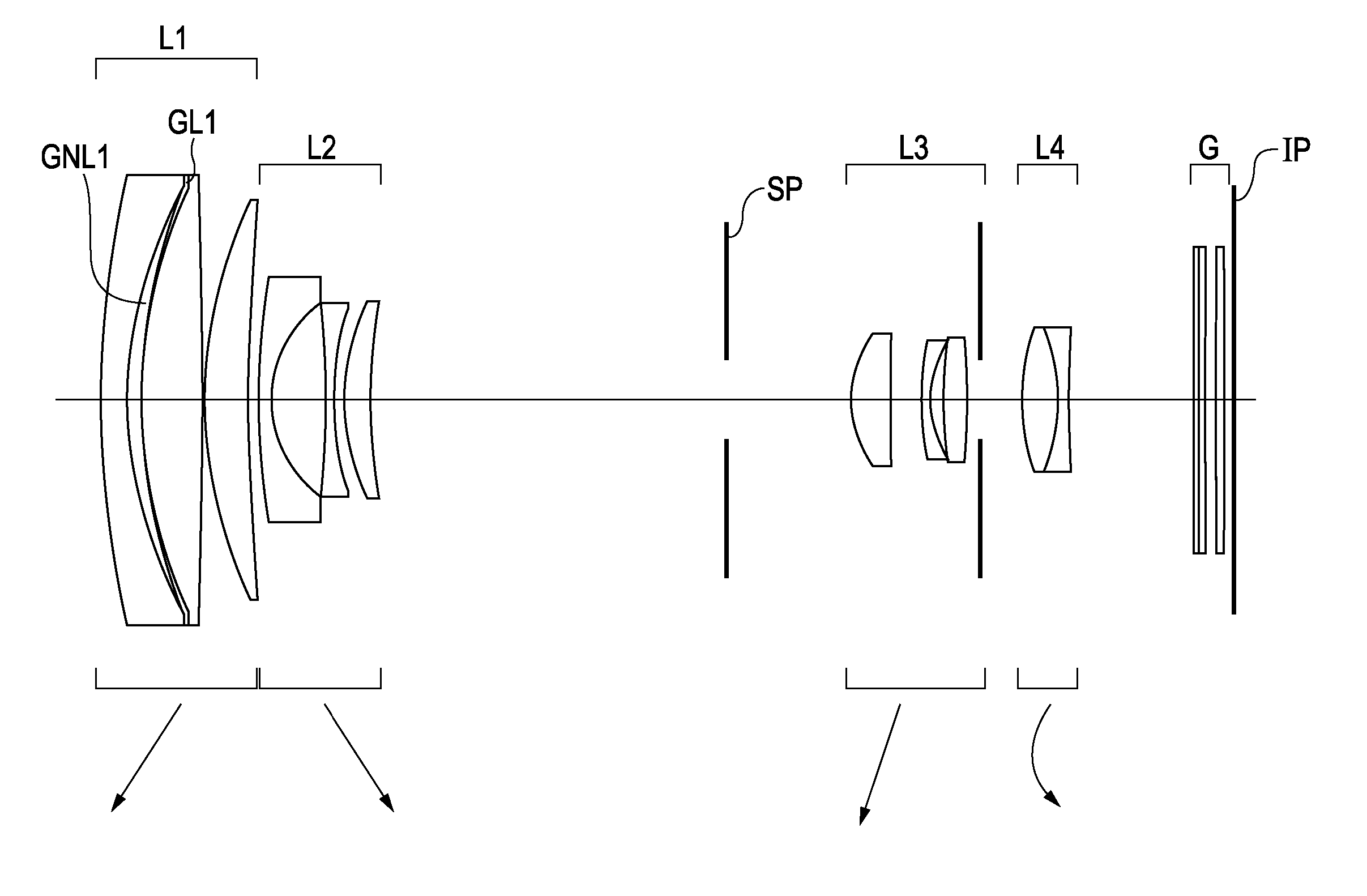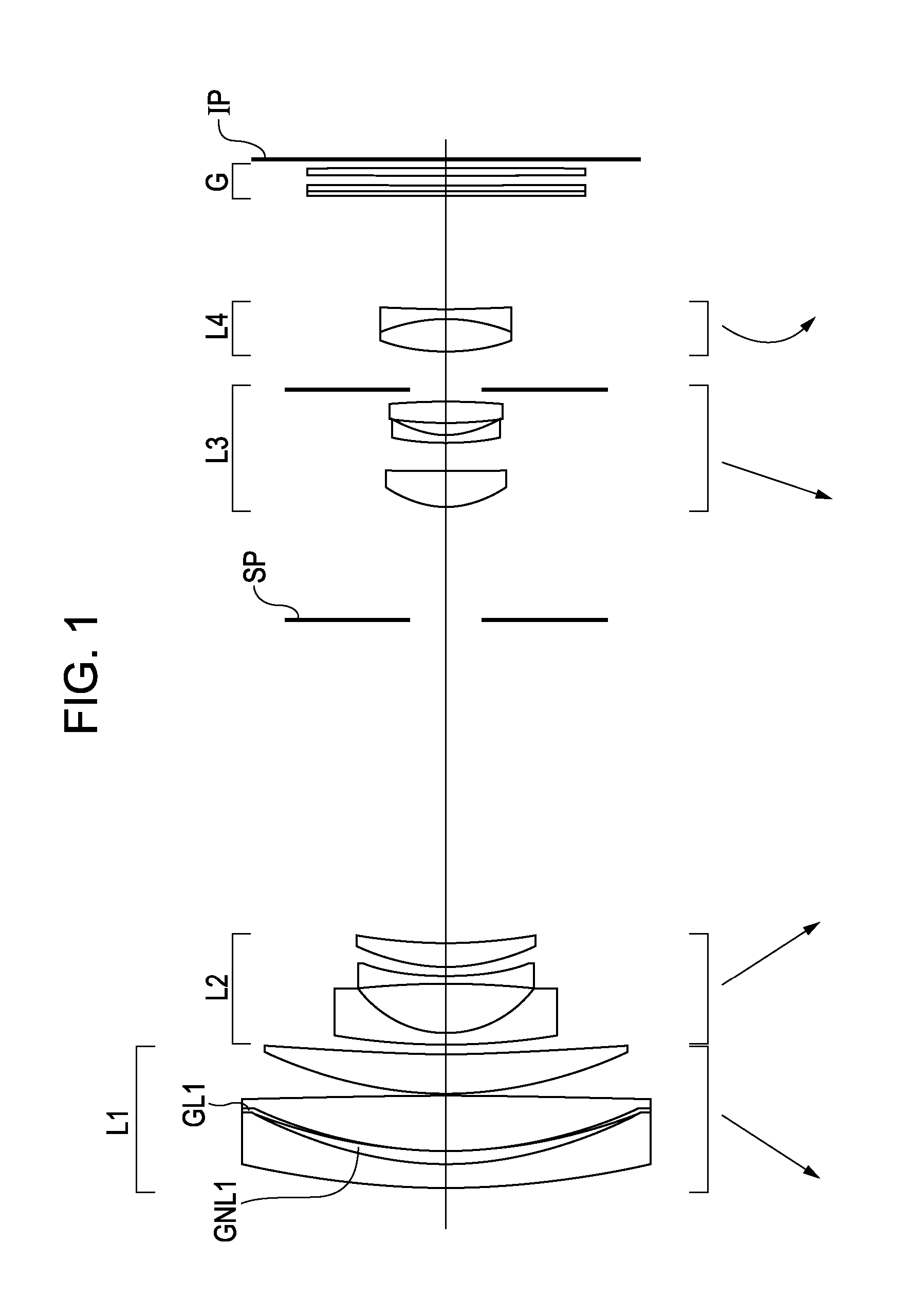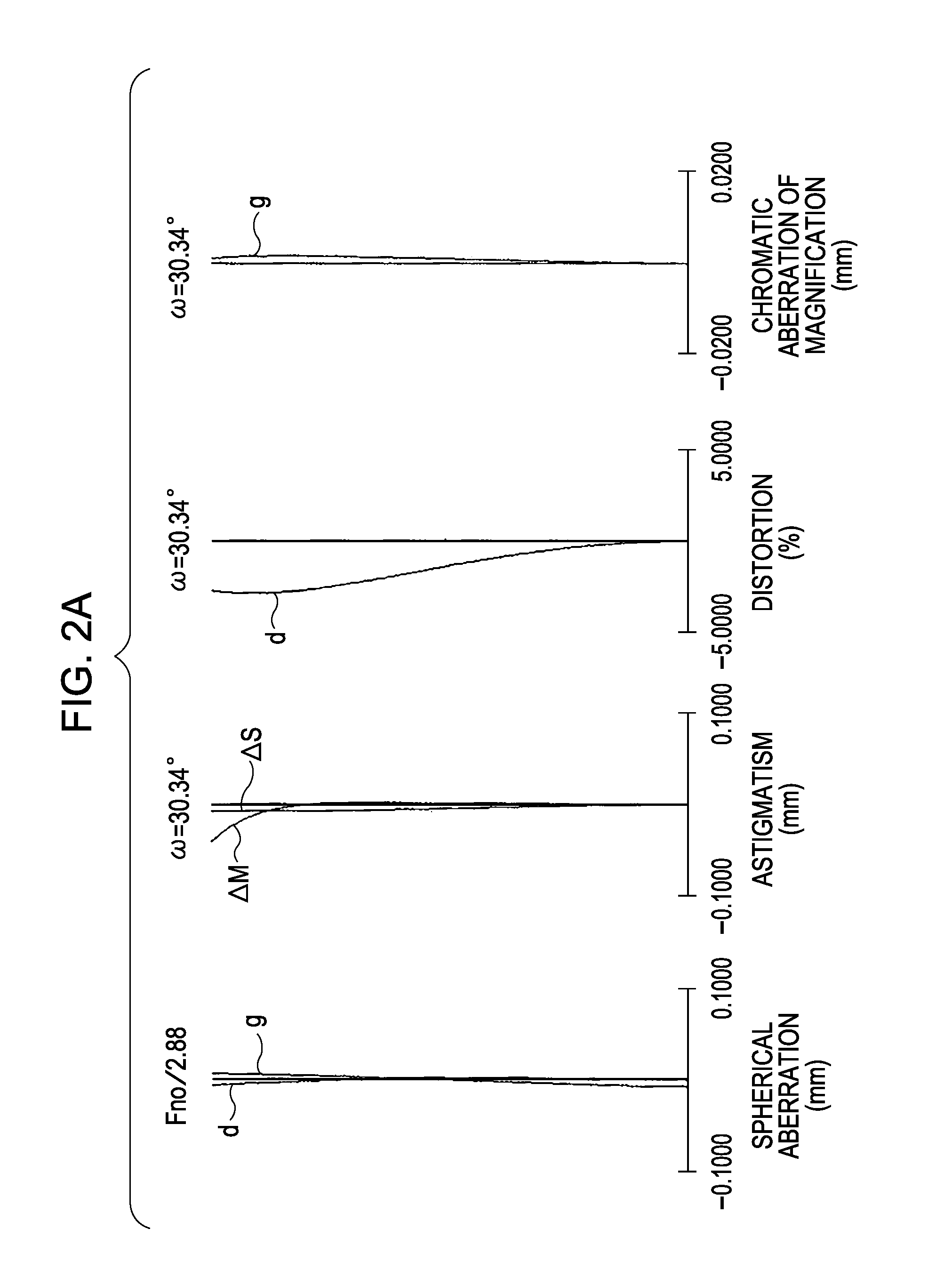Optical system and optical apparatus including optical system
- Summary
- Abstract
- Description
- Claims
- Application Information
AI Technical Summary
Benefits of technology
Problems solved by technology
Method used
Image
Examples
first exemplary embodiment
[0062]According to a first exemplary embodiment, an optical system includes a refractive optical element (hereinafter also referred to as an “optical element”) obtained by providing a refractive function to a solid material that satisfies the following conditions.
[0063]As used herein, the term “solid material” of the refractive optical element refers to a material that is solid in a use environment of the optical system. Accordingly, the material may be in any state before the optical system is in use (e.g., during a fabrication period). For example, even when the material is liquid during a fabrication period, the material is referred to as a “solid material” if the liquid material is cured into a solid material.
[0064]The features of an optical system OL according to the present embodiment is as follows.
[0065]A paraxial marginal ray is a paraxial ray that, when the focal length of the entire optical system is normalized to “1”, travels parallel to the light axis of the optical syst...
PUM
 Login to View More
Login to View More Abstract
Description
Claims
Application Information
 Login to View More
Login to View More - R&D
- Intellectual Property
- Life Sciences
- Materials
- Tech Scout
- Unparalleled Data Quality
- Higher Quality Content
- 60% Fewer Hallucinations
Browse by: Latest US Patents, China's latest patents, Technical Efficacy Thesaurus, Application Domain, Technology Topic, Popular Technical Reports.
© 2025 PatSnap. All rights reserved.Legal|Privacy policy|Modern Slavery Act Transparency Statement|Sitemap|About US| Contact US: help@patsnap.com



